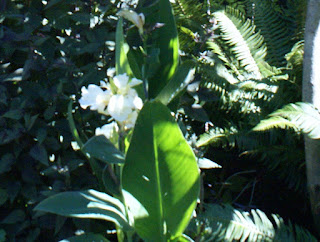"There remaineth one necessary thing...
which in my Opinion makes as much for Ornament, as either flowers, or forme, or cleanness...which is Bees, well ordered."
~ William Lawson,
New Orchard and Garden 1618
I’ve mentioned in my profile that I am a beekeeper. I have one hive in my urban garden. I love seeing honey bees buzzing around and pollinating my flowers, but mostly I have to walk a few houses down the street to find legions of my bees gathering nectar and pollen in my neighbor’s yard. I’m happy to share so I don’t intend to duplicate her garden in mine, but one day she mentioned my bees had been all over her Borage for weeks. Well, I knew nothing about Borage but I just had to get some of that!
So I ordered a seed packet from http://www.nicholsgardennursery.com/ along with my vegetable seeds order. I planted 4 seeds in March indoors in 4 small pots. All four came up and three survived. I planted the seedlings outdoors, one in the sun, two in semi-shade. They grew quickly and began flowering, beautiful true blue single flowers. And sure enough the bumblebees and my honey bees found the flower’s sweet nectar in no time. The taller the plants got the more leggy they seemed, but the one in the full sun was better. Then they needed staking…I very much dislike staking, but did it anyway, for the sake of the bees of course. Then after a wind blew through a few of the stems broke down. More staking and trimming, grrr. And on and on it went till I gave up the tiresome staking and just let them break down. I figured I’d be ripping them out when I got around to it but the bees still came to the flowers, even the flowering branches lying on the ground. As I removed the damaged stems I noticed lots of fresh new shoots coming from just below any damaged area. The plants just kept going and going and going, rejuvenating themselves!
Since I just left them alone, they have become nice and full and still blooming even now in November. That’s one energized annual! I wonder when they’ll quit. The few hard frosts we’ve had haven’t fazed them at all. Last month I noticed a humming bird sipping from the flowers too. And I gave up trying to save all the seeds this plant produces, so I’ll be hoeing seedlings for sure. It is a prolific self seeder!
Were you wondering still about that “a hairy garment” comment? Be forewarned, the leaves do taste cucumber-ish but are so furry, they are unpleasant to chew on. Every bit of the plant except the flowers are covered with soft spines. The flowers are a true blue color, a rare find in garden plants. Mostly ‘blue’ plants are on the purpley side, and some gardeners search high and low to include true blue in their garden scheme. Give borage a try.
In bloom in my garden today: Kirengeshoma palmata, Borage, Daphne, Digitalis (foxglove), Salvia, Nepeta (cat mint), Solanum crispum (potato vine), Phygelius (cape fushia) Schizostylis (river lily), Alyssum
Food ready for the birds: Caryopteris seeds, Mountain Ash berries, Pyracantha berries, Echinacea seeds, Coreopsis seeds, Liatris seeds.
Photo's courtesy of Pat Chissus





